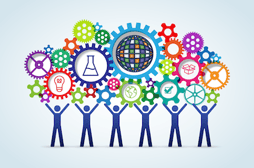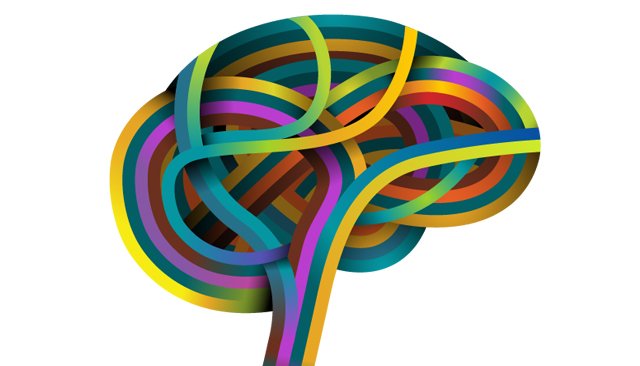By: Melissa Hughes, Ph.D. on July 22nd, 2016
What Happens in the Brain When Students Collaborate?
Perfecta | Professional Development | Student Engagement | Poster Maker 3600 | STEM | Maker Movement | Featured Topics: Professional Development
This post has been republished with permission from Dr. Melissa Hughes, a curriculum and instruction expert. In partnership with Dr. Hughes, VariQuest delivers professional development webinars to valued educators. To learn more about this offer, visit our professional development page.

The Maker Movement, as it’s called, is finding its way to more and more classrooms today. STEM and STEAM initiatives have promoted a learning culture that flips the priority from the consumption of information to the production of innovative and creative meaning. According to some educational experts, the Maker Movement could actually be the impetus for the next industrial revolution.
And that’s really, really GREAT news! Research shows that the essential elements of making and learning by doing lead to deeper cognition and greater application. Educational experiences that are hands-on, engaging, discovery-based, and collaborative enable a wealth of benefits. One of the fundamental elements of the maker movement is the emphasis on collaboration and social interaction. Research shows that students who have many opportunities for healthy collaboration surpass those who don’t in several key areas:
- Development of higher-level thinking, self-management, and leadership
- Promotion of healthy social interaction
- Increase in information retention
- Greater self-esteem
- Greater ability to accept and understand diverse perspectives
Moreover, enabling kids to learn through collaboration is perhaps the best preparation we can give them for their professional future. Finding the secret sauce of collaborative success has become a big deal in the grown-up world over the last decade or so. Studies show the average employee spends more than 75% of his/her time on team-based tasks. Today’s employers want people who can work together to build things, solve problems, and get things done.
Healthy collaborative learning experiences nurture another valuable trait – resilience. When students look to their peers as resources, it requires trust and a certain vulnerability to test their own theories with the risk that it’s okay to explore and be “wrong.” Trust is the key, though.
The reason that collaboration is essential to learning is because our brains are actually wired for social interaction.
Thanks to recent advances in neuroscience, we know what happens in the brain when students are engaged in healthy collaborative learning experiences. The social interaction of sharing thoughts, emotions, and goals - with a sense of trust - generates oxytocin, a neurotransmitter that creates both the chemistry and physical structure in the brain to generate and be open to new ideas. Sometimes called the “cuddle hormone,” it’s the chemical the brain produces when we feel a sense of belonging with our friends or family or we work together on a team to win a game.
Oxytocin is unique in that the more we make, the stronger the body and brain respond to it. Our nerve cells actually grow more receptors to get more of it. Think of this like the roots on a tree. The more you water the tree, the more roots it will grow to get more water. Oxytocin is the chemical that you want the brain to produce. It reduces antisocial behavior, counters anxiety, reduces depression, and counteracts cortisol.
Cortisol is the opposite hormonal response to oxytocin. It is released when the brain experiences stress instead of love, belonging and a social connection. The key is that cortisol and oxytocin generate opposing emotions, just as these opposing emotions trigger the production of the respective chemicals. Neurochemical production and behavior is cyclical. What that means is we can take charge of our brain and direct the production of certain chemicals by directing our behavior.
If we put kids in learning situations where they feel the social connection with peers in a trusting environment, their brains will produce oxytocin. If we put them in stressful learning situations where they feel isolated and anxious, their brains will produce cortisol, which over time will actually begin to shrink brain cells and weaken the strength of the synapses that enables learning to occur.
Okay, so you’re not ready to set up a makerspace in your classroom just yet?
Don’t despair. There are some simple strategies that you can incorporate into daily instruction to foster healthy collaboration and get the oxytocin flowing in your classroom.
- Actively involve students in group discussions. Small group work doesn’t always have to be about an end product; small group discussions are important ways to help kids self-manage, contemplate different points of view, and create their own meaning. Establish the expectation early that small groups must provide every member opportunities to contribute. Students are more likely to take ownership of their learning and apply related content when they work together as a team.
- Look for ways to turn individual work into group work. The next time you assign individual work, ask yourself if there is a way to transform it into buddy work or small group work. For example, instead of giving each student a graphic organizer to complete, consider giving each group a piece of butcher paper and let them create one together. If you have the VariQuest Perfecta™ 2400 Full Color Poster Design System or the Poster Maker 3600, you can turn any PDF into a poster in minutes.
- Turn interactive notebooks into social sharing experiences. Interactive notebooks are typically individual learning experiences. Let students swap notebooks with a buddy to see how their peers have created meaning for a particular lesson. This is especially valuable when you’ve given students a great deal of creative freedom to complete an activity. To learn more about interactive notebooks, click here to attend a professional development webinar- "Start the Year with Interactive Notebooks" on July 26, hosted by Dr. Melissa Hughes and VariQuest.
- Celebrate diverse perspectives. Building the trust necessary for students to take risks and share ideas that may not necessarily be the “right answers” is essential. Remind students that we learn by exploring various ideas in a constructive manner. One way to promote this is by praising students who do take the risks and share their ideas as a contribution to a more comprehensive discussion.


Dr. Melissa Hughes is the founder and principal of The Andrick Group. Our mission is to engage, inspire, and educate people to increase their capacity for learning and creativity. We do this by providing tailored, dynamic workshops that help organizations improve their work by understanding whole-brain thinking and learning and applying that to achieve greater productivity, professional growth, and personal satisfaction.

